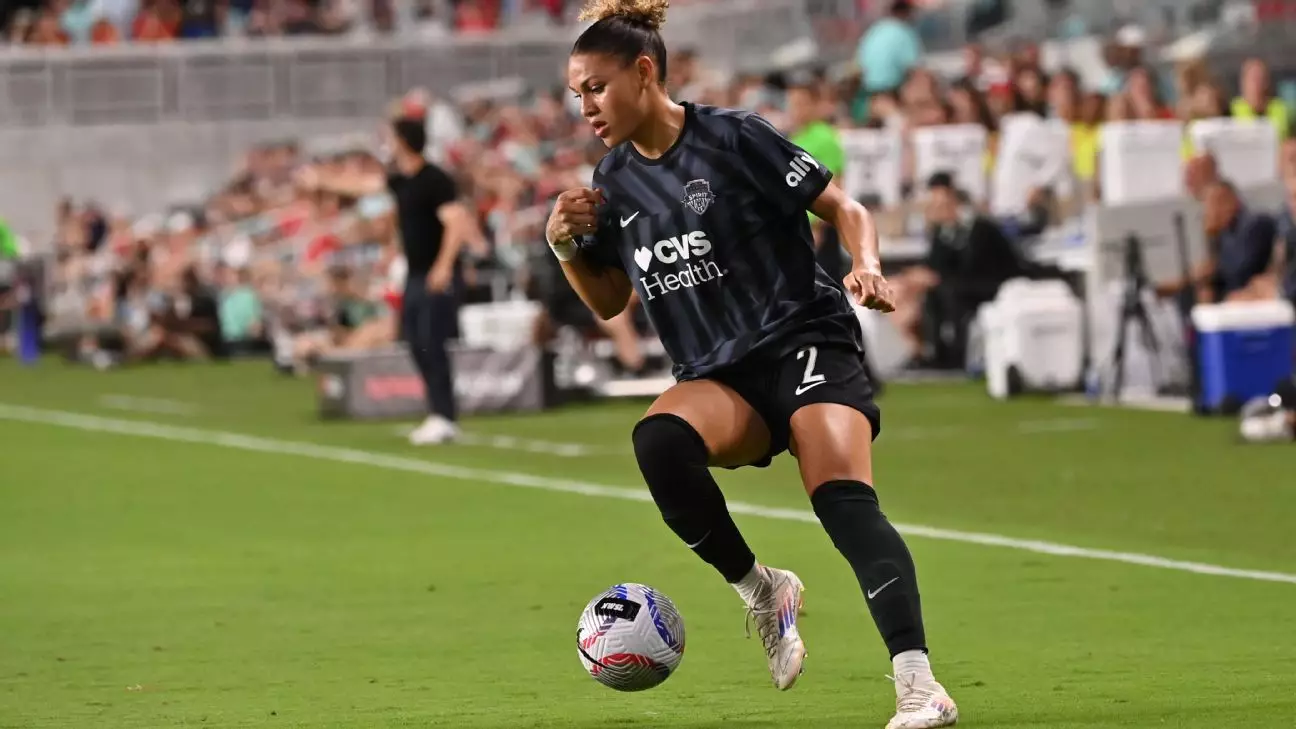Trinity Rodman’s much-anticipated return to the U.S. Women’s National Team (USWNT) represents not just a personal triumph but also a significant moment for a squad striving to mold a new generation of talent. After a lengthy hiatus marked by injuries and the challenges of the NWSL, Rodman is set to rejoin her teammates for the upcoming matches against Brazil on April 5 and April 8. This reunion serves as a vital assessment period for head coach Emma Hayes as she experiments with a range of players, including some young talents poised to fill the void left by departing veterans.
Rodman’s situation is emblematic of the multifaceted pressures athletes face. She has battled through substantial back pain that sidelined her from national training camps, ultimately limiting her playtime with the Washington Spirit. Her return to form—a narrow loss against the Kansas City Current, where an overturned goal opportunity left fans yearning for more—illustrates both her tenacity and the ceiling she aims to break through again on the national stage.
Rematch of Titans
The upcoming games against Brazil aren’t just friendly matches—they are a revenge rematch against the team that challenged the USWNT at the Olympic Games last year. Even though the Americans triumphed 1-0 to secure the gold medal, the Brazil squad is evolving and will no doubt bring a wave of fierce competition to the pitch. This context adds weight to Rodman’s return; she is not merely rejoining a team, but stepping back into a high-stakes environment where her contributions could prove pivotal.
Hayes aims to assess how well younger players integrate into this high-performance environment. With an average roster age of 25.3 years and many players boasting only a handful of caps, the USWNT is in a reinvention phase, gathering insights and experiences from emerging stars. Rodman’s deft footwork and offensive prowess will be essential in guiding this new cohort as they vie for consistency in performance against formidable opponents.
The New Faces of the Future
Among the ten newcomers on the roster, 17-year-old Lily Yohannes and 19-year-old Claire Hutton highlight the team’s strategy to cultivate young talent. Their récente appearances—Yohannes notably showcasing her skills during the SheBelieves Cup—reflect a burgeoning sense of optimism as the USWNT gears up for the 2027 World Cup. Hayes emphasizes the urgency for these younger players to undergo the rigorous process of proving their worth, not just for the immediate matches but for the long journey ahead.
A very noteworthy addition is Avery Patterson, the Houston Dash full-back receiving her first call-up to the senior team, underscoring the team’s commitment to developing fresh talent. Alongside Rodman, these players symbolize a new era in American women’s soccer—one that unites freshness and renewed ambition within a still-diverse generational framework.
Team Chemistry Amidst Change
While youth is emphasized in this roster, the return of established players like Alana Cook and Ashley Hatch is crucial. Each marks a significant re-entry into the fold that could help balance the inexperience among younger players. Hayes has meticulously crafted a blend of youth and experience, establishing an environment where players learn from each other, fostering chemistry that could carry them through the competitions ahead.
The team’s dynamic hinges on maintaining intense competition for starting slots. Hayes expressed her commitment to ensuring every player earns their position through performance and consistency. This kind of accountability can push both new and veteran players to elevate their game, furthering the team’s overall success.
As the USWNT prepares to face Brazil, the convergence of established stars and emerging talents like Rodman creates a captivating narrative to watch unfold. With myriad stories intertwining on the national team, the return of players from adversity exemplifies resilience and the relentless pursuit of excellence as they strive to leave a lasting legacy in the world of women’s soccer.


Leave a Reply